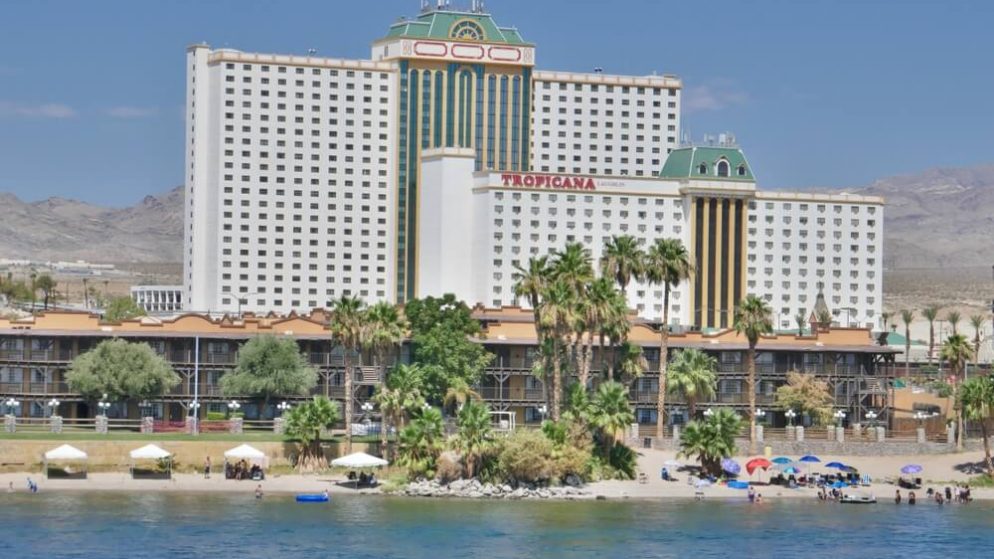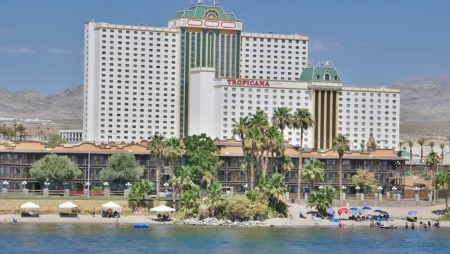

In a strategic move to strengthen financing for its ambitious Chicago casino project, Bally’s Corporation is reportedly contemplating the sale of the land housing the shuttered Tropicana. By selling the Tropicana land, Bally’s can streamline its portfolio and focus resources on this promising venture.
According to insights from a Las Vegas-based analyst, this potential sale could provide the necessary capital infusion to ensure the success of their high-profile venture in Chicago. The land occupied by the closed Tropicana represents a significant and largely untapped asset for Bally’s.
By selling this valuable real estate, the company is looking to unlock significant capital that can be redirected to support the development and operational costs of the Chicago casino project. The Chicago project is expected to draw a large number of visitors, thus presenting a lucrative opportunity.
Colin Mansfield, Vice President of Credit Research for CBRE Credit Research in Las Vegas, suggested in a report to investors not too long ago that Bally’s might consider selling the Tropicana site. This idea comes at a time when there’s uncertainty about a bid by hedge fund Standard General (SG) to buy Bally’s.
Mansfield believes there’s “less than a 50 percent” chance that this bid will succeed. “This is SG’s second effort to privatize Bally’s, following a previous offer of $38 per share in 2022,” Mansfield mentioned in his report, as cited by the Las Vegas Review-Journal. “Although there are many uncertainties, we estimate that the deal has less than a 50 percent chance of being accepted.
Bally’s faces an $800 million financing deficit for its Chicago project, which is set to begin construction later this year after opening a temporary casino in the city last fall. This issue is compounded by the strain on Bally’s credit profile, as noted by Mansfield, especially with downgrades from three credit-rating agencies.
SG, Bally’s largest shareholder, offered $15 per share to acquire all remaining shares and privatize the company on March 11. Other investors have advised Bally’s to reject the bid. Mansfield pointed out that while the Tropicana site has been a negative asset for Bally’s, its value has increased since it was purchased.
Bally’s has shown interest in selling the land, with management mentioning a potential price of $9 million per acre, which could bring in over $300 million.
During the third-quarter 2023 earnings call, management said they would consider selling the site if the price was right, stating, “at the right price, they would unload anything,” referring to the Tropicana land.
Land prices on the Strip can vary greatly. For example, Genting Group bought the Resorts World Las Vegas site for $7 million per acre in 2013, while Tilman Fertitta paid $45 million per acre for a 6-acre plot on Las Vegas Boulevard.
What we cover
Bally’s Tropicana site is still uncertain
Meanwhile, the future of Bally’s Tropicana site is uncertain. Nine acres are earmarked for a $1.5 billion Major League Baseball stadium to relocate the Oakland Athletics to Las Vegas. However, the project is under a legal cloud regarding public funding, with a Nevada Supreme Court decision expected soon.
The Athletics, tasked with constructing the stadium, have obtained $380 million in public funding from the Nevada Legislature. However, a private organization named Schools Over Stadiums is contesting this decision by attempting to place the issue of stadium funding on the ballot for the upcoming November election.
Why haven’t the A’s moved to Las Vegas yet?
Using the Triple-A park in Summerlin, about 12 miles from the A’s planned stadium at the old Tropicana hotel site, is an option. However, this wouldn’t be the grand entrance the A’s are aiming for in Vegas.
There’s a precedent for this: the Washington Nationals played their first three seasons at RFK Stadium while Nationals Park was being built. But starting out in a minor league park with a struggling team isn’t the A’s top choice, making Las Vegas a long shot for 2025-27.
Will they make it to Vegas by 2028?
Securing the stadium deal took a lot of effort and lobbying. Building the stadium by 2028 requires sticking to the schedule, something the A’s haven’t been great at. With $380 million in public funding allocated for the $1.5 billion stadium project, the Schools Over Stadiums group continues to push for a ballot vote on the use of tax dollars.
If construction doesn’t start by early 2025, there are doubts about whether the A’s will be ready to play near the Strip by 2028. In their proposal to MLB’s relocation community, the A’s suggested they could have a payroll around $170 million by the time they arrive in Vegas, as reported by The Athletic.
This is a significant increase from the organization’s highest Opening Day payroll of $92.2 million in 2019. Is it feasible for a team to nearly double its highest payroll and more than triple its current one over the next three seasons, despite potentially lower TV revenue and limited gate receipts due to ballpark size?
While it’s possible, it’s not very likely. Although the A’s will save money by not investing in projects to assess their future spending, expecting the team to operate in a temporary location for the next three years without a major-league-level TV deal and with gate revenue restricted by stadium size, while also significantly increasing their payroll, requires a leap of faith that even the most loyal fans might find difficult to make.
Final Thoughts
In conclusion, Bally’s potential sale of the Tropicana land is a strategic move aimed at addressing the financial challenges and opportunities presented by their ambitious Chicago casino project. By offloading this underutilized asset, Bally’s can unlock significant capital to support the development and operational costs of the Chicago venture, positioning it for long-term success.
This decision reflects Bally’s commitment to streamlining its portfolio and focusing resources on high-potential investments, despite the uncertainties surrounding the Standard General bid and the financial strain noted by credit analysts.
Simultaneously, the future of the Tropicana site remains uncertain due to the ongoing legal battles and funding issues related to the proposed MLB stadium for the Oakland Athletics. These complexities underscore the challenges Bally’s faces in managing its real estate assets while pursuing growth in new markets.

